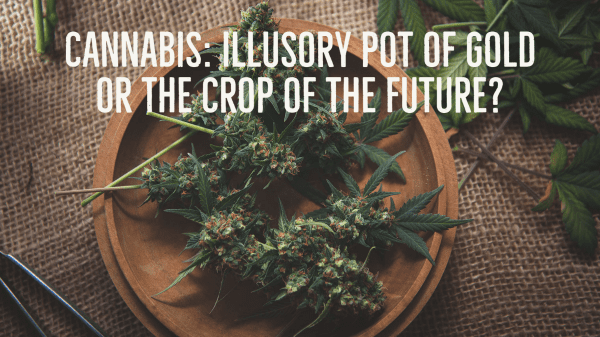
Canada legalized cannabis in October 2018.
As a result, says a source knowledgeable about Canadian agriculture, “there was a real cannabis rush about two years ago.”
But “the hoopla” didn’t last, and many companies that got into the burgeoning field failed.
The coronavirus also made a difference.
“People said, ‘We need to grow fruits and vegetables; we need to grow food,’” says the Canadian source, who says it has all “been a bit of a pipe dream, so to speak.”
“We’ve seen a big retreat from large-format greenhouses, with most of the largest cannabis companies having retreated entirely or mothballed facilities,” says George Smitherman, president and CEO of the Cannabis Council of Canada.
“Outdoor growing of cannabis has expanded a lot over the past two years; however, I don’t believe lands have transitioned from produce—more likely cash crops.”
Hemp is a different story: commercial production in Canada was authorized in 1998.
But, being principally grown in the Prairie provinces of Manitoba, Saskatchewan, and Alberta—where primary crops include wheat, canola, and sunflowers—it does not compete significantly with fruit and vegetables.
“We don’t have quite the same high-value crop options (like produce) grown in our area,” says Andrew Bailey, director of grower relations for Blue Sky Hemp Ventures, based in Saskatoon, Saskatchewan.
“So, hemp is another rotation option for growers, with potential for multiple revenue streams (seed, CBD, fiber). But it’s not a commodity like many of the crops growers are producing and used to marketing.
“I do believe in 2019 acres were up,” Bailey adds. “But in the past year and upcoming year, the acres were back down and will remain relatively stable.”
This is an excerpt from the cover story of the May/June 2021 issue of Produce Blueprints Magazine. Click here to read the whole issue.
Canada legalized cannabis in October 2018.
As a result, says a source knowledgeable about Canadian agriculture, “there was a real cannabis rush about two years ago.”
But “the hoopla” didn’t last, and many companies that got into the burgeoning field failed.
The coronavirus also made a difference.
“People said, ‘We need to grow fruits and vegetables; we need to grow food,’” says the Canadian source, who says it has all “been a bit of a pipe dream, so to speak.”
“We’ve seen a big retreat from large-format greenhouses, with most of the largest cannabis companies having retreated entirely or mothballed facilities,” says George Smitherman, president and CEO of the Cannabis Council of Canada.
“Outdoor growing of cannabis has expanded a lot over the past two years; however, I don’t believe lands have transitioned from produce—more likely cash crops.”
Hemp is a different story: commercial production in Canada was authorized in 1998.
But, being principally grown in the Prairie provinces of Manitoba, Saskatchewan, and Alberta—where primary crops include wheat, canola, and sunflowers—it does not compete significantly with fruit and vegetables.
“We don’t have quite the same high-value crop options (like produce) grown in our area,” says Andrew Bailey, director of grower relations for Blue Sky Hemp Ventures, based in Saskatoon, Saskatchewan.
“So, hemp is another rotation option for growers, with potential for multiple revenue streams (seed, CBD, fiber). But it’s not a commodity like many of the crops growers are producing and used to marketing.
“I do believe in 2019 acres were up,” Bailey adds. “But in the past year and upcoming year, the acres were back down and will remain relatively stable.”
This is an excerpt from the cover story of the May/June 2021 issue of Produce Blueprints Magazine. Click here to read the whole issue.
Richard Smoley, contributing editor for Blue Book Services, Inc., has more than 40 years of experience in magazine writing and editing, and is the former managing editor of California Farmer magazine. A graduate of Harvard and Oxford universities, he has published 11 books.



